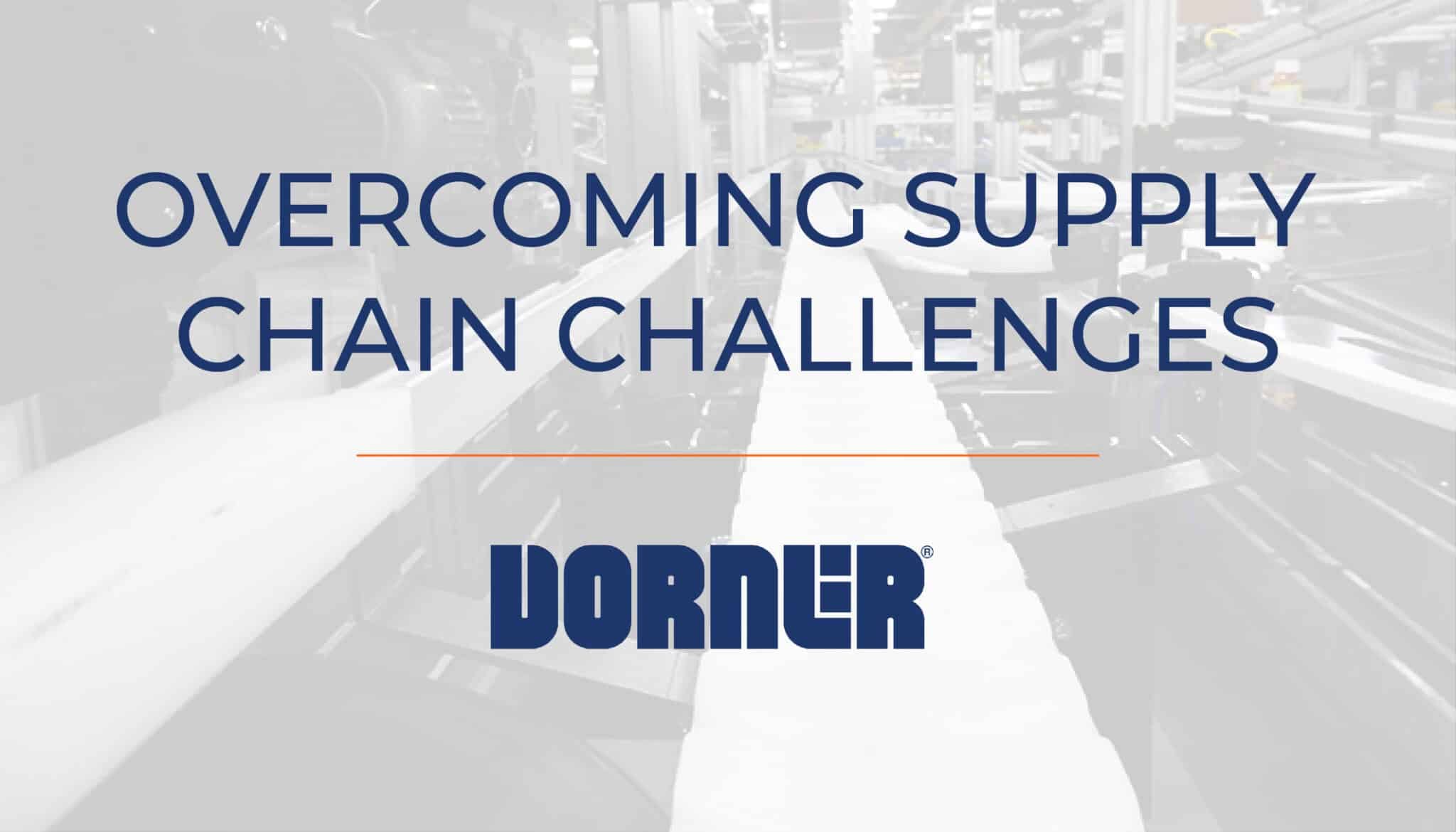
2022 is proving to be another year of significant supply chain challenges both for raw materials and manufactured goods, and everyone from consumers to manufacturers and suppliers is feeling the pain. Between intensifying conflicts in Europe, climate change, and COVID-related disruptions, prices continue to go up and supply is dwindling.
With the constantly fluctuating state of the modern supply chain, industries around the world are considering new ways to adapt their manufacturing and shipping processes to overcome these issues. Dorner is no different.
Despite many challenges over the past few years, we have worked tirelessly to keep our lead times low while still producing quality conveyors for a variety of industries. Here are a few things we’ve learned.
Localize Supply
It’s no secret that the longer supply chains are, the easier it is for disruptions to happen. In the past, many companies had moved both supply and manufacturing steps of their process overseas, the downfall of which is now rearing its ugly head. Labor shortages, shutdowns due to the pandemic, and disruptions in long-distance shipping have become some of the biggest causes of supply chain delays.
By sourcing materials as locally as possible, and manufacturing in-house, companies can significantly reduce wait times within their supply chain. Granted, for some companies that rely almost entirely on overseas labor and materials, this can be a huge investment in funding and time to implement these changes. The key is easing into it one step at a time and striving for a future goal, rather than making sweeping changes all at once.
Digitalize
In the areas where it isn’t possible for companies to localize, digitalization is another great option. Technology is continuously improving and should be utilized to take the pressure off manufacturers’ pain points.
There are a plethora of tools available to implement supply and product tracking, create data reports, run future predictions of demand and supply scenarios, and use AI for real-time supply management.
The use of digital tools takes away many time-consuming tasks for supply managers and helps to better predict fluctuations so companies can get ahead of the changes rather than adapt to them.
Communication
In a time when it’s said that “there is no new normal,” communication is key to managing supply and manufacturing challenges. Localizing and digitizing cannot remove every issue and delay, so it’s important for suppliers and manufacturers to communicate with each other. Providing information and updates right away reduces wasting valuable time and effort later on.
Additionally, manufacturers can improve their customer relationships by communicating updates before they are requested by a frustrated customer. Keeping open lines of communication from suppliers all the way down the line to customers allows everyone to make adjustments and plan for possible disruptions, making the whole process much smoother.
Of course, with the ever-changing industry climate, there’s no way to fully plan for supply chain disruptions. The best that we can all do is remain flexible and creative throughout the production and distribution process and prepare as best we can for the future.





